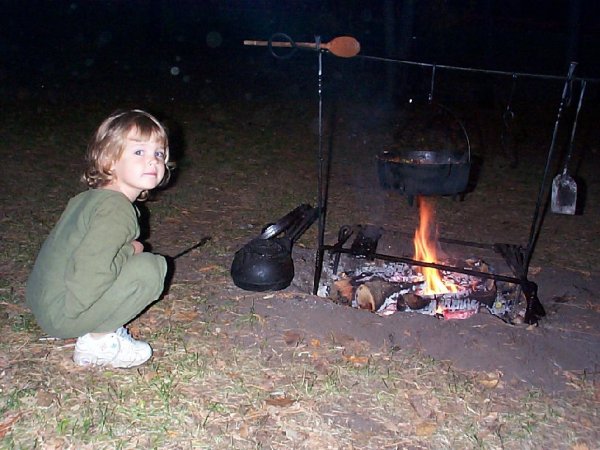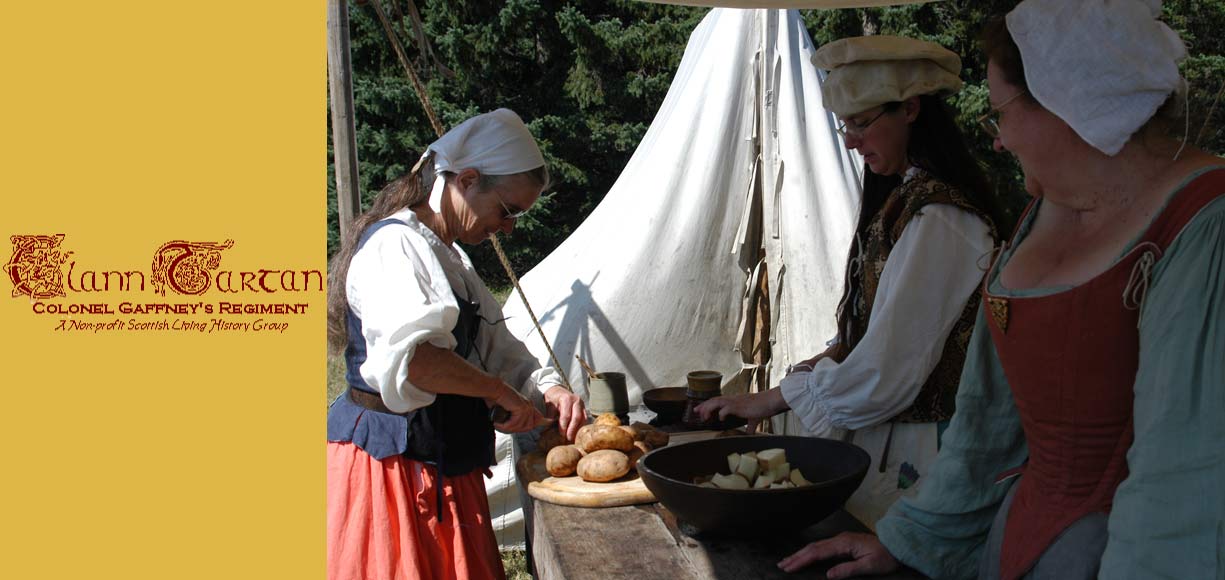Fire & Hearth
Most of us have wandered through antique shops and in a back corner found some odd iron implement, the use of which as been forgotten. This, I am sure, is how most of our 20th century audience views the tangle of ironwork erected over our cooking fire.
Domestic iron implements were once a very important part of the household. So much so, that kitchen pots were willed to friends and relatives. Thomas Quenell a yeoman (tradesman) died in 1571. The house and land reverted to his brother Robert. In the will Robert's wife Agnys was to inherit among other things:
"My best brass pot my best and my leaste twoe kettles and my kettle wch was bounde brasse, and the Occupanon of my cawdron as often as she shall have nede, so long tyme as she shall be dwellinge at Egethehill."
In addition to pots and pans there were many different kinds of iron work. The 16th century down-hearth (large fireplace, some 5 feet high) of a well-to-do family looked more like a Medieval torture chamber than a kitchen. The fire itself was built on a slab of stone, or cast iron. On top of this slab stood the firedogs. Firedogs, or andirons were the most primitive form of iron work related to the down hearth. The up-rights faced the room and kept the logs from rolling out of the hearth. The bar extending into the heath raised the logs off the hearth so air could circulate around and under the fire.
Behind the fire, leaning against the back wall was the fire-back. This large slab of cast iron was there to prevent damage to the brickwork from the heat. Firebacks were made by sand-castinc, and were often elaborately decorated and dated.
The chimney crane, or as the Scots called the "sways," were mounted at one of the back corners of the hearth. The crane resembled a large shelf bracket, and could swing pots into position over the fire. Some chimney cranes not only turned, but also could raise and lower pots with ratchet-style levers.
The tramell jack, or pot jack was used instead of the s-hooks we have been using. These jacks also worked on a ratchet principle, or by hook and eye. Another method of suspending pots was by a large chain with a small hook. The hook was hung from a link on the chain at the proper height. In Scotland the chain was called a "jumping rope."
Roasting meat was a very important part of food preparation during the 16th and 17th centuries. Meat spits came in many different types. Most home spits had a wheel at one end that a rope fit into. The meat was secured with skewers, or surrounded by a basket. The spit was placed between two up-rights called spit-dogs. The spit-dogs had hooks on them at varying heights to adjust the meat's distance from the fire.
Meat spits could be turned by hand, or by devices called spit-jacks. A rope was run from the wheel on the spit to the jack. Some jacks were wound like clocks: "clockwork jacks". Other spit-jacks had fan-like paddles inside the chimney and the rising heat and smoke turned the paddies. This type was called (you guessed it) a smoke-jack. However, the best example I found for a spit-jack ran on dog power. A dog was placed in a hamster-style wheel near the ceiling. The dog would turn the wheel and ropes and pulleys would turn the spit. This was a common enough practice that articles were even written about the best breeds of dogs to use.
We can learn much from the function of everyday implements, much more than simply how to use them. We can see a small glimpse into life in the time we are portraying through the traditions surrounding them, and we can help our audience glimpse those times as well.

